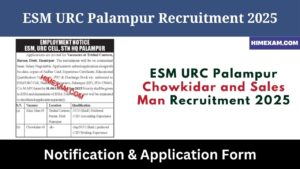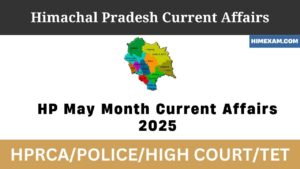Table of Contents
ToggleMUGHALS AND HILL STATES
- Mughal Dynasty was started by Babur in 1526 AD, he killed Ibrahim Lodhi in 1st Battle of Panipat (1526 AD). He died in 1530 AD and his eldest son Humanyun succeeded him. Afghan king Sher Khan of Bengal defeated Humayun in the battle of Chausa in 1539 AD and again in 1540 AD at battle of Kannauj (Bilgram).
- Sher Shah Suri sent his general Khawas Khan to the Kangra hill to bring the valley under control. After the conquest, the area was placed under the charge of Hamid Khan Kakar but most of the historians are not agreed to this conquest, they argued Jahangir was the first who captured Kangra fort in 1620 AD.
- Akbar succeeded the throne in 1556 AD, Akbar had a conflict with Sikandar Shah because in 1557 AD he invaded Punjab. When Akbar advanced against him, he entered in the territory of Nurpur whose ruler Raja Bakht Mal was supporter of Sikandar Shah. During this campaign Akbar camp was probably at Nurpur. Sikandar Shah took refuge in a fort between Pathankot and Nurpur, which was captured by Mughal army and Sikandar was allowed to retire to Bengal.
- Now Akbar was suspicious about Kangra ruler Jai Chand and made an order to capture him that was done by Raja Ram Chand of Guler. His son Bidhi Chand assumed his father dead and got the throne and broke out into revolt against Mughal. In 1572 AD, Akbar sent army under Khan Jahan Hussain Quli Khan to subdue the territory, which was given to Birbal as Jagir.
- Now Hussain Quail Khan and other nobel set out for Nagarkot by way of Pathankot and Dhameri (Nurpur). Bakht Mal the Raja of Nurpur who had had allied himself with Sikandar Shah in AD 1556, was forced to surrender at Mankot and was executed at Lahore by Bairam Khan.
- Kotla fort located twenty miles from Nurpur originally belonged to Raja Ram Chand of Guler but it was occupied by Raja of Kangra and Nurpur forcefully. Mughal army snatched the fort and handed over to the Raja of Guler.
- Now Mughal army was in a position to seize Kangra fort but when it was reported that Ibrahim Hussain Mirza and Musud Mirza, relative of Akbar had invaded the Punjab, the Mughal Army departed from Nagarkot to Punjab in order to oppose the Mirza bothers.
- Akbar made another attempt as he deputed his finance minister Todar Mal who succeeded to acquire sixty six villages in the valley and the whole of the area of Rihlu from Chamba but could not succeed to acquire Kangra fort.
- After the death of Raja Jai Chand in 1585 AD, his son Bidhi Chand ascended the throne and formed alliance with states between Jammu and Kangra. In 1588-89 AD they all broke into rebellion and to suppress this revolt Akbar sent his foster brother Zain Khan Koka who made them all to surrender. After surrender Bidhi Chand had to leave his son Trilok Chand as hostage at the Mughal court.
- In 1594-95 AD there was another rebellion by the hill chief led by the Raja of Jasrota but Bidhi Chand of Kangra and Raja Basu of Nurpur did not involve. This movement was suppressed by Mughal army under Mirza Rustam Qandhari and other forces under Sheikh Farid.
- Bidhi Chand died in 1605 AD and was succeeded by his son Trilok Chand. Jahangir also succeeded to the throne in 1605 AD. He sent a force against Kangra in 1615 AD under the command of Sheikh Farid who received the title of Murtaza Khan and assisted by Raja Suraj Mal of Nurpur.
- When Kangra fort was about to be seized, differences developed between Sheikh Murtaza Khan and Raja Suraj Mal, and Jahangir requested Suraj Mal to come back, he was sent to Deccan to assist prince Shahjahan in 1616 AD. After Suraj Mal returned, Murtaza Khan was taken ill and died at Pathankot.
- In second attempt Raja Man Singh (Raja of Jaipur) was sent to acquire Kangra but he was killed before he took his charge by one of zamindars named Sangram who was from hilly area of Punjab.
- After two unsuccessful attempts Jahangir had discussion with his son Shahjahan (Khurram) and it was decided to send Suraj Mal and Shah Quli Khan Mohammed Taqui. Before leaving Suraj Mal was honoured with khillat (dress) and khapwa (jewellery). During their journey to Nagarkot, Suraj Mal started quarrelling with Mohammed Taqui. Suraj Mal declared Taqui incompetent and he was recalled. After Taqui returned, Suraj Mal started sending away the imperial troops to his own Jagir. When most of the Mughal troops dispersed, he collected his troops and raised a revolt against Mughals. On hearing this Jahangir sent Rai Raiyan Sunder Dass for his suppression, Suraj Mal took shelter in Mankot fort in the territory of Chamba.
- Suraj Mal’s brother Jagat Singh was summoned from Bengal to join Rai Raiyan Sunder Dass to attack Kangra fort which was ultimately acquired in 1620 AD and Nawab Ali Khan was appointed governor of fort.
- Jahangir received the news of acquisition of Kangra fort on 20th November 1620.
- In January 1622 Jahangir visited Kangra with Noorjahan and returned by Nurpur and Pathankot.
- During Jahangir journey Chamba ruler Janardhan along with his brother Bishambar were waiting for Jahangir. Both were killed in the following year in a war with Jagat Singh of Nurpur.
- The Battle of Nadaun was fought between Raja Bhim Chand of Bilaspur (kahlur) and Mughal army under Alif Khan who was supported by Raja of Kangra and Bhim Chand was supported by Guru Govind Singh. Raja Bhim Chand emerged victorious (1690-91 AD). The cause of battle was that Raja Bhim Chand refused to pay tribute to Mughals.
- The last Mughal Quiladar of Kangra fort Saif Ali Khan was appointed in 1740 AD during the closing reign of Mughal Empire.
- Mughal emperor Jahangir gave the title of “Mian” to Rajput princes of Punjab Hill States who were held hostages in royal court.
- Ahmad Shah Durrani invaded Punjab ten times between 1748 AD and 1768 AD.
- Raja Ghamand Chand took advantage of confusion created by Durrani and regained all territory that had been lost by his ancestors except Kangra fort to Mughals.
- Ahmad Shah Durrani appointed Ghamand Chand as Nazim Governor) of Jallandhara Doab in 1759 AD.

.png)







